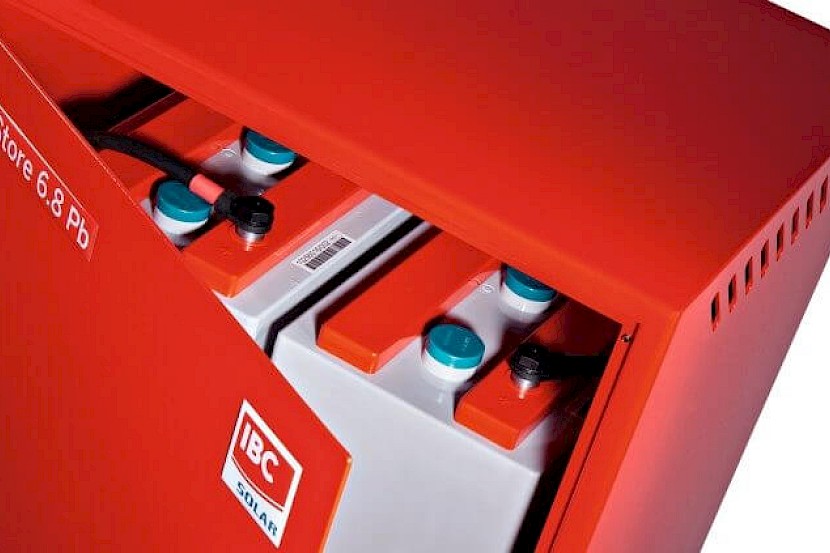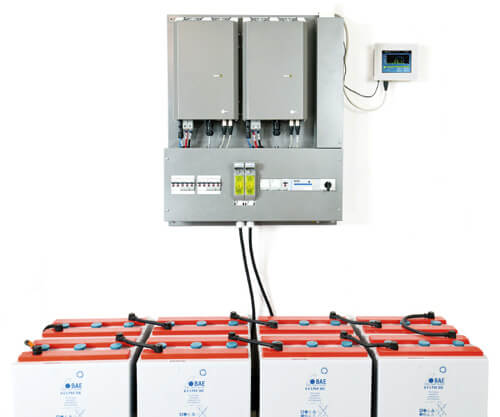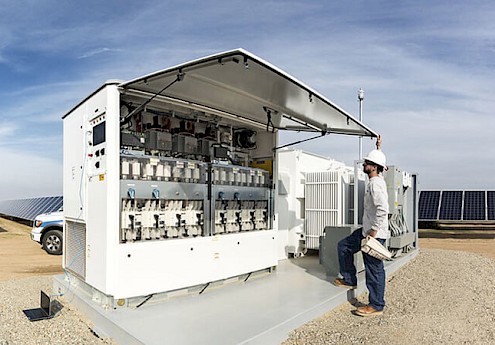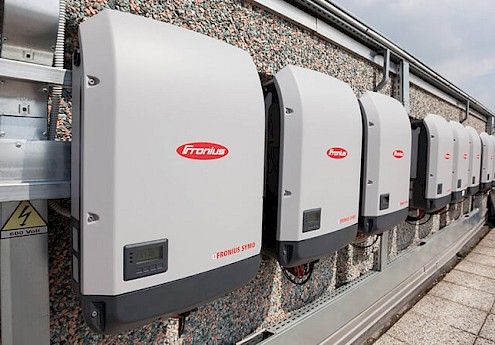
What gel storage is all about
Lead-acid batteries usually consist of an acid-resistant outer skin and two lead plates that act as electrodes, liquid sulfuric acid serves as the electrolyte. In the case of gel storage, on the other hand, the sulfuric acid is bound by silicic acid and the electrolyte is thus thickened, which makes it appear like a gel. Fine cracks appear in this gel, through which oxygen can easily reach the negative electrode. Water recombines with the hydrogen ions it encounters there. In contrast to other rechargeable batteries with liquid electrolyte, gel batteries produce very little gas and are easy to maintain.
How does gel storage work?
In the neutral, i.e. discharged state, a layer of lead sulphate forms on both electrodes. In the charged state, however, a positive electrode is formed with lead sulphate and a negative one with lead sponge. As soon as this chemical process is set in motion by charging and discharging, electrical energy is generated.
What types of gel storage are there?

The various products from the power storage manufacturers differ in many details. The system efficiency is one of those details where the manufacturer information is mostly inconsistent. The depth of discharge is also important. A solar storage device in the form of a battery must not be 100 percent discharged, as this would damage it. The depth of discharge indicates how far the photovoltaic storage device can be discharged. This value varies between manufacturers between 50 and 90 percent.
Benefits of Gel Storage
Gel storage can generate very high currents and achieve high power peaks, and they are also the most cost-effective solution in the field of solar power storage.
They are robust, low-maintenance and resilient. These batteries are often equipped with an encapsulation that prevents the electrolyte from escaping. Another advantage is that it is easy to transport and that the gel storage device has no prescribed operating position.
Disadvantages
Compared to lithium variants, for which there is not yet sufficient experience, the lead and gel battery is significantly heavier and cannot withstand temperatures above 45 degrees. The average service life of the gel storage is ten years, well below that of lithium-ion batteries, which are designed for 15 years. In addition, a gel battery only has half the maximum charging cycles of a lithium-ion battery, and it is only possible to discharge to an average depth of discharge of 50 percent. If you want to charge them, you may need a special charger that controls the charging process and prevents harmful overcharging.
Problems can arise in winter
Gel storage can take up to eight hours to complete a full charge cycle. In the winter months, when there is little sunlight, this can become a problem. Not only is it often not possible to feed in enough electricity for use in wintry weather, the battery voltage of the lead-gel energy storage device drops significantly if it is not fully charged over a longer period of time. Because as soon as the voltage falls below the critical value, the service life of this energy store suffers. If such a case occurs, modern control devices switch off the memory so that it is not damaged.
The course of the day with a solar power storage unit
Development never stands still
The efficiencies indicate how high the energy loss is from the solar module to the consumer through electronic components. At up to 86 percent, the efficiency of a battery with lead-acid technology is on average lower than that of batteries based on lithium-ion. However, batteries based on gel storage have so far been significantly cheaper than rechargeable batteries based on lithium-ion. However, intensive work is being done on further development in this area and changes can be expected here in the next few years.
In recent years, research and industry have increasingly focused on decentralized solar power storage. When used properly, the technology for electrochemical battery storage and rechargeable batteries can significantly increase both the self-consumption rate and the degree of self-sufficiency in the household.
In order to always stay up to date and to be able to use this future-oriented technology as cheaply as possible, you should check the SecondSol online marketplace regularly!





